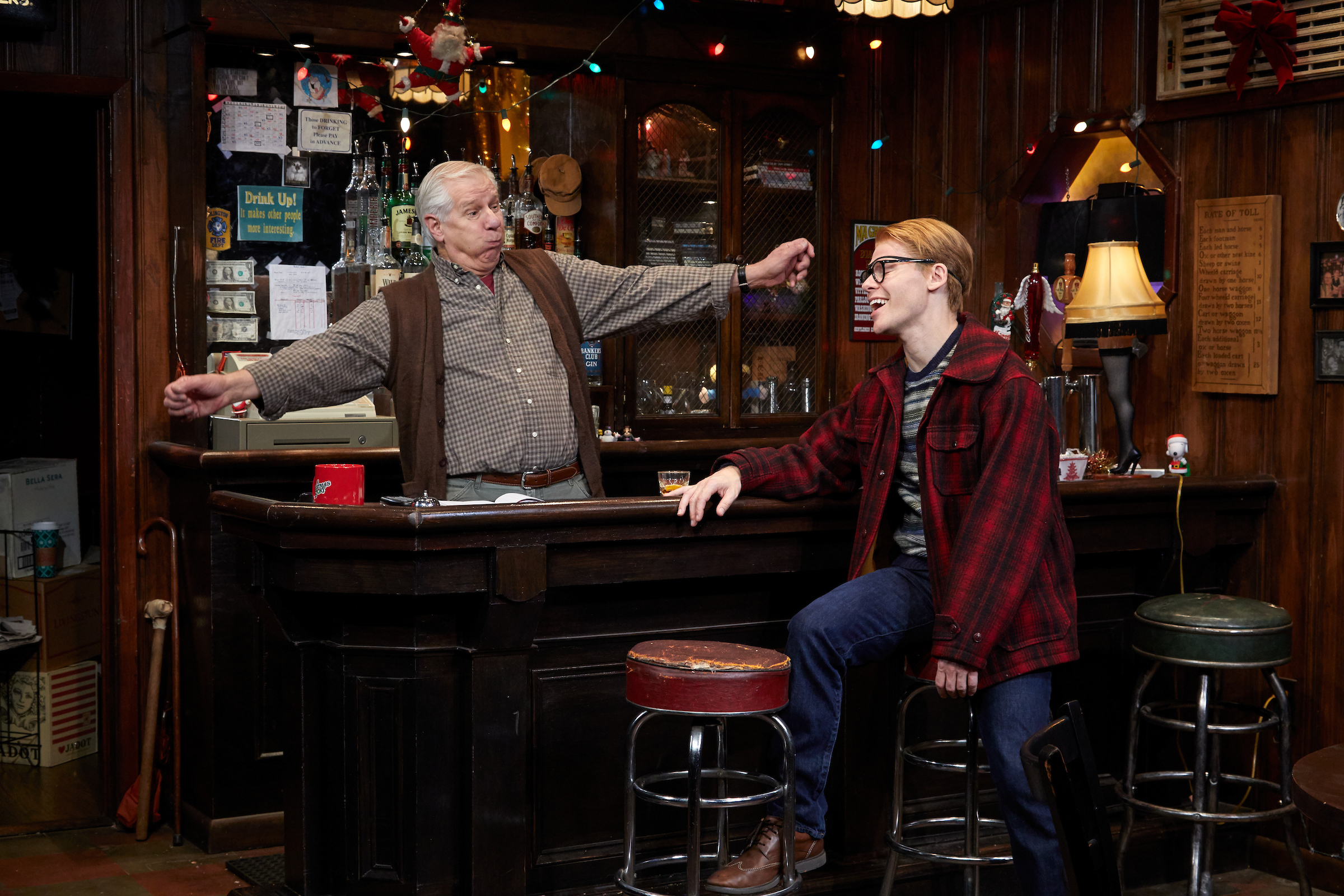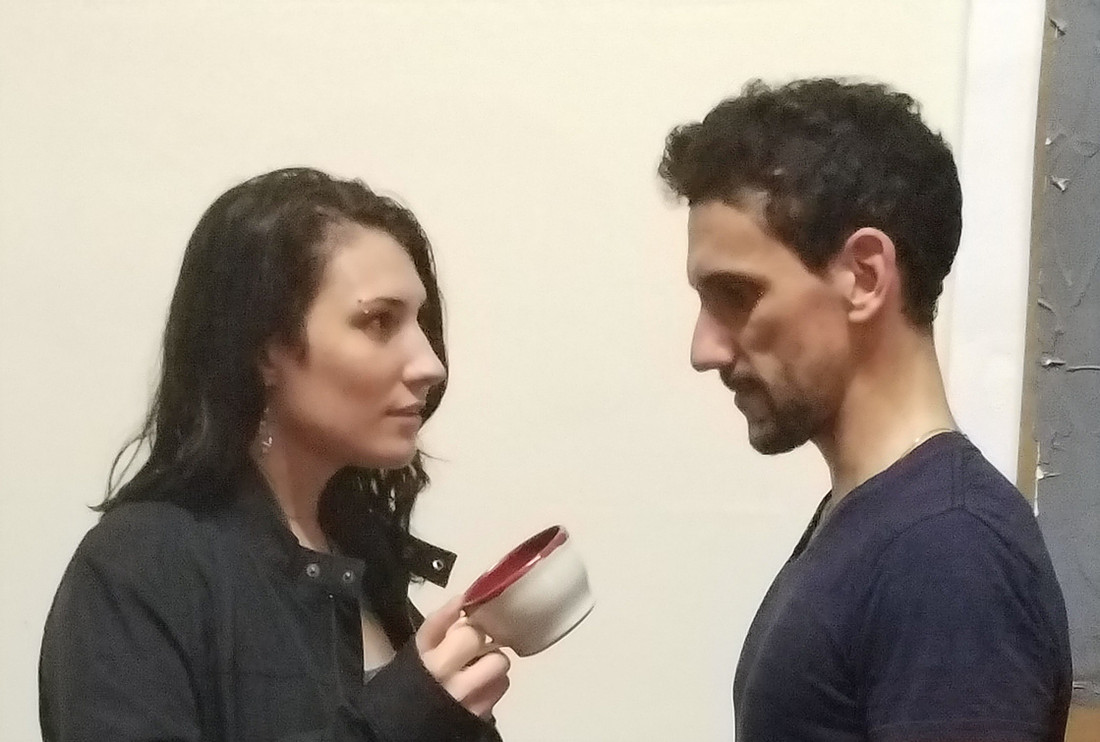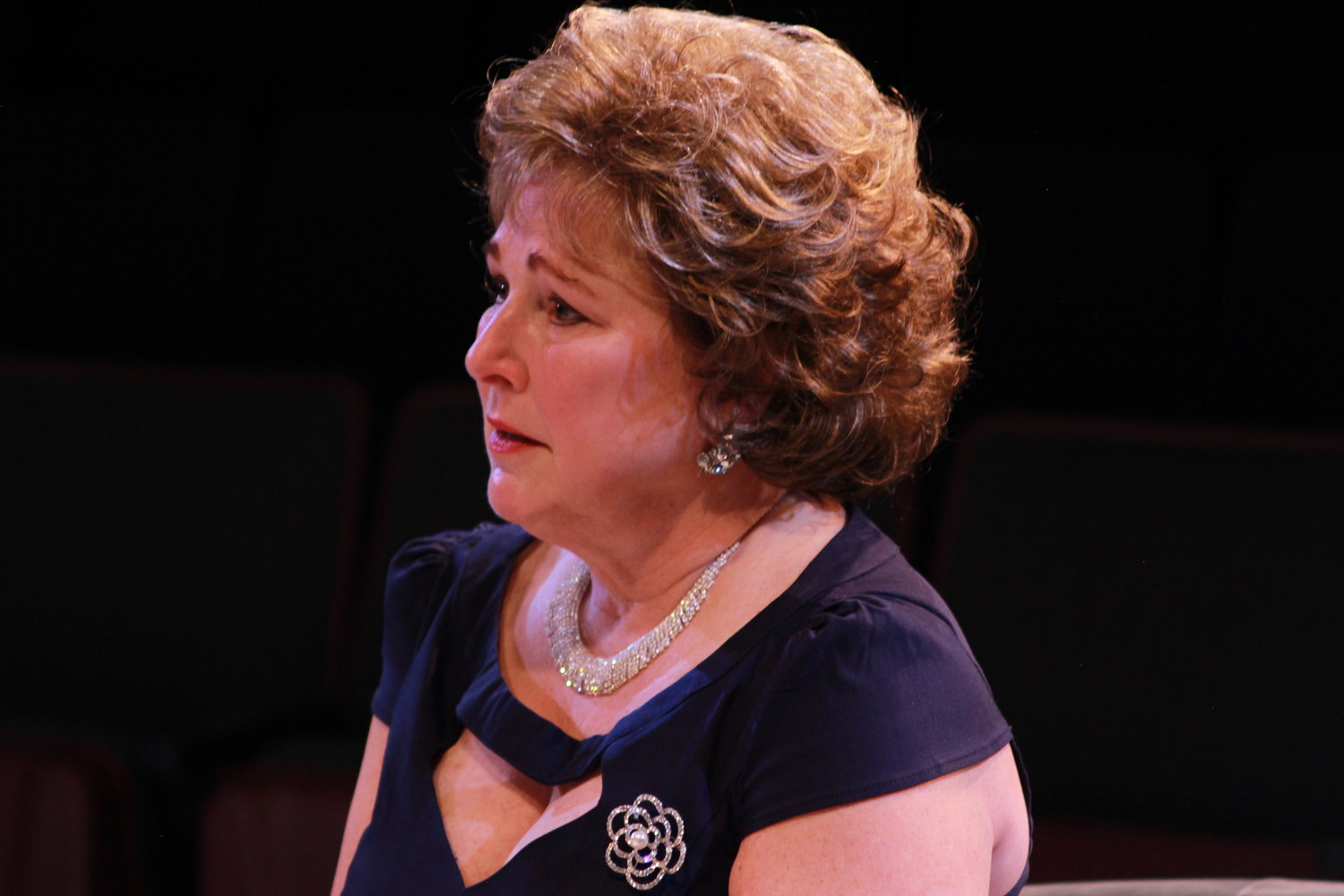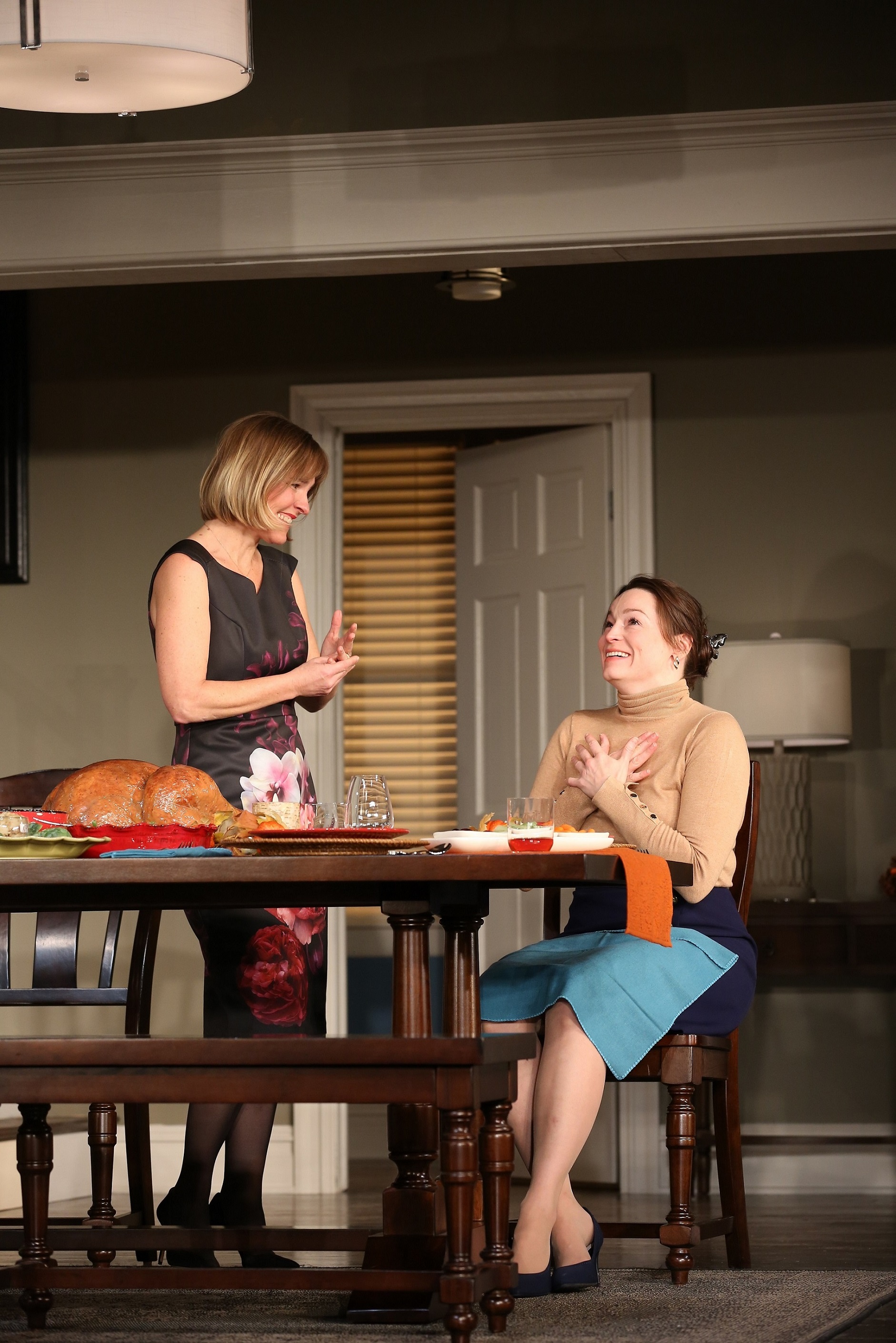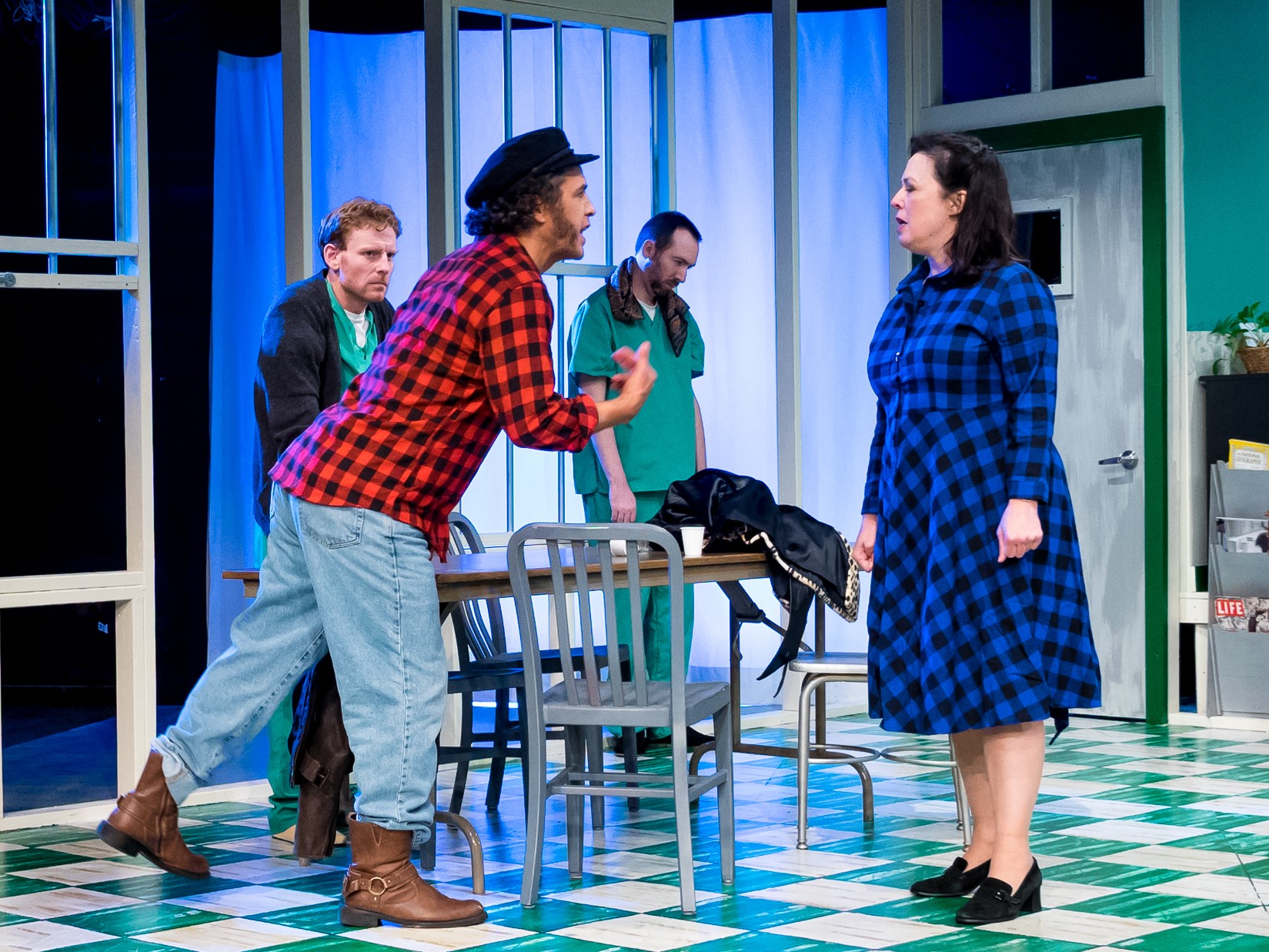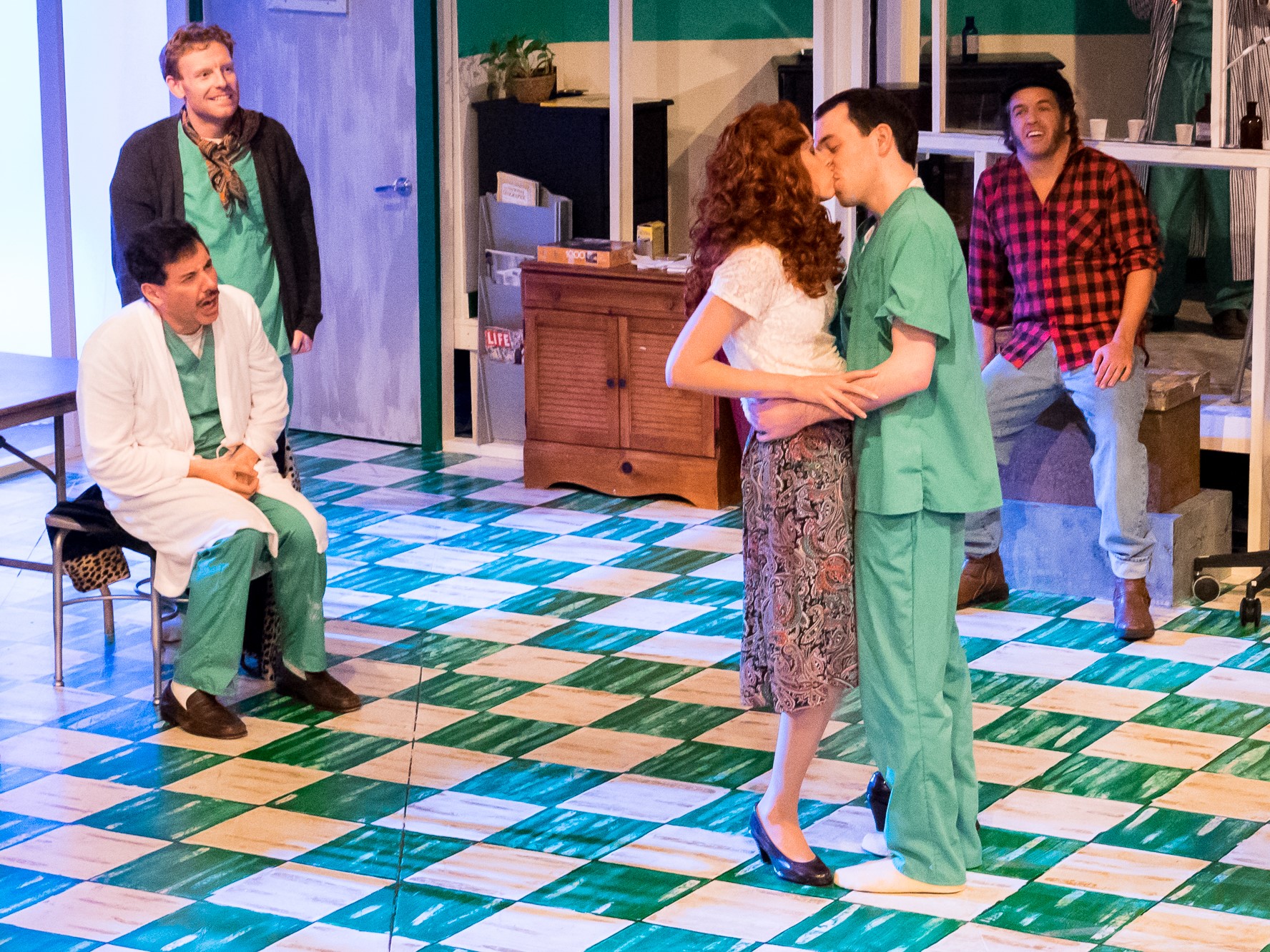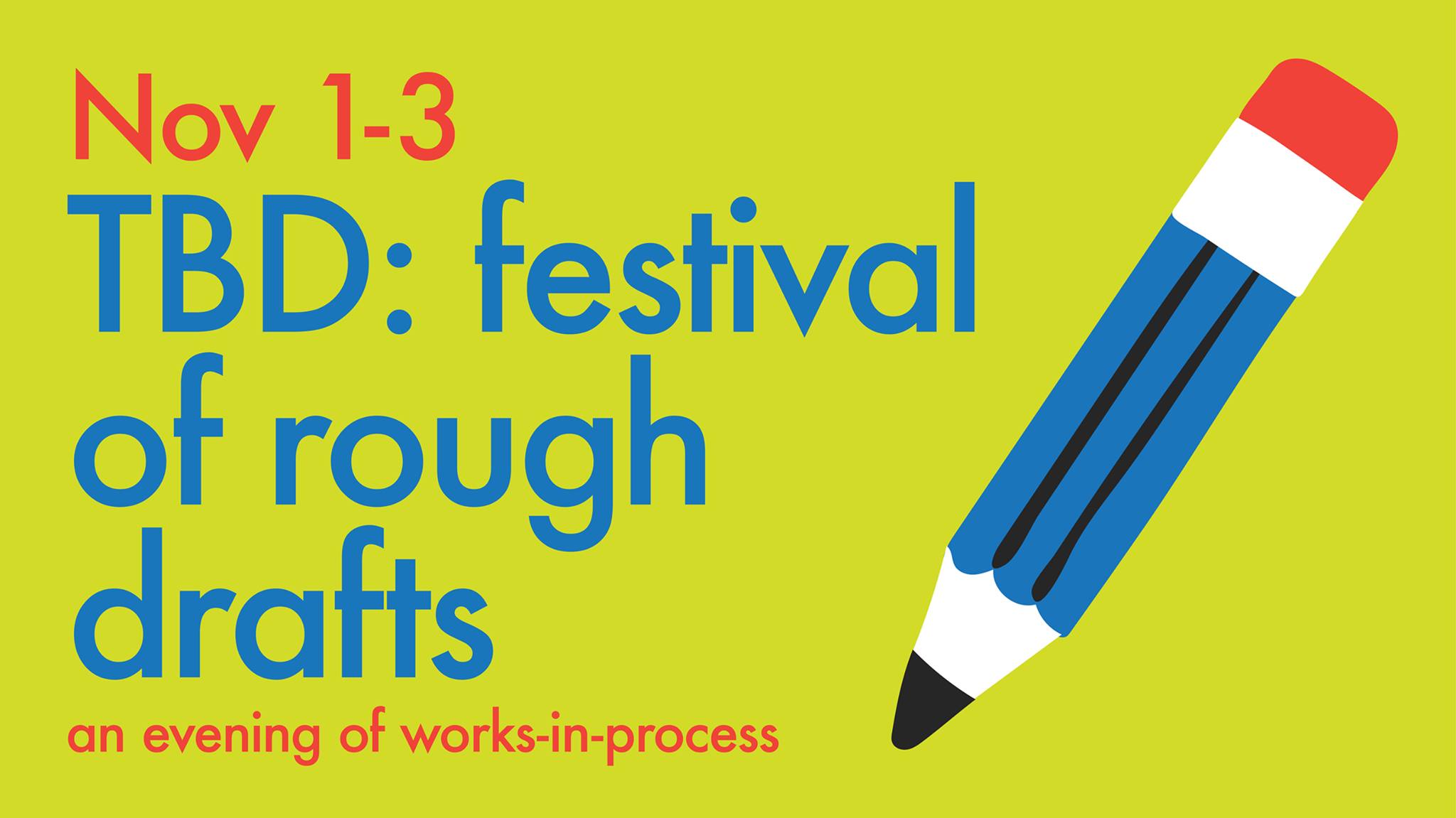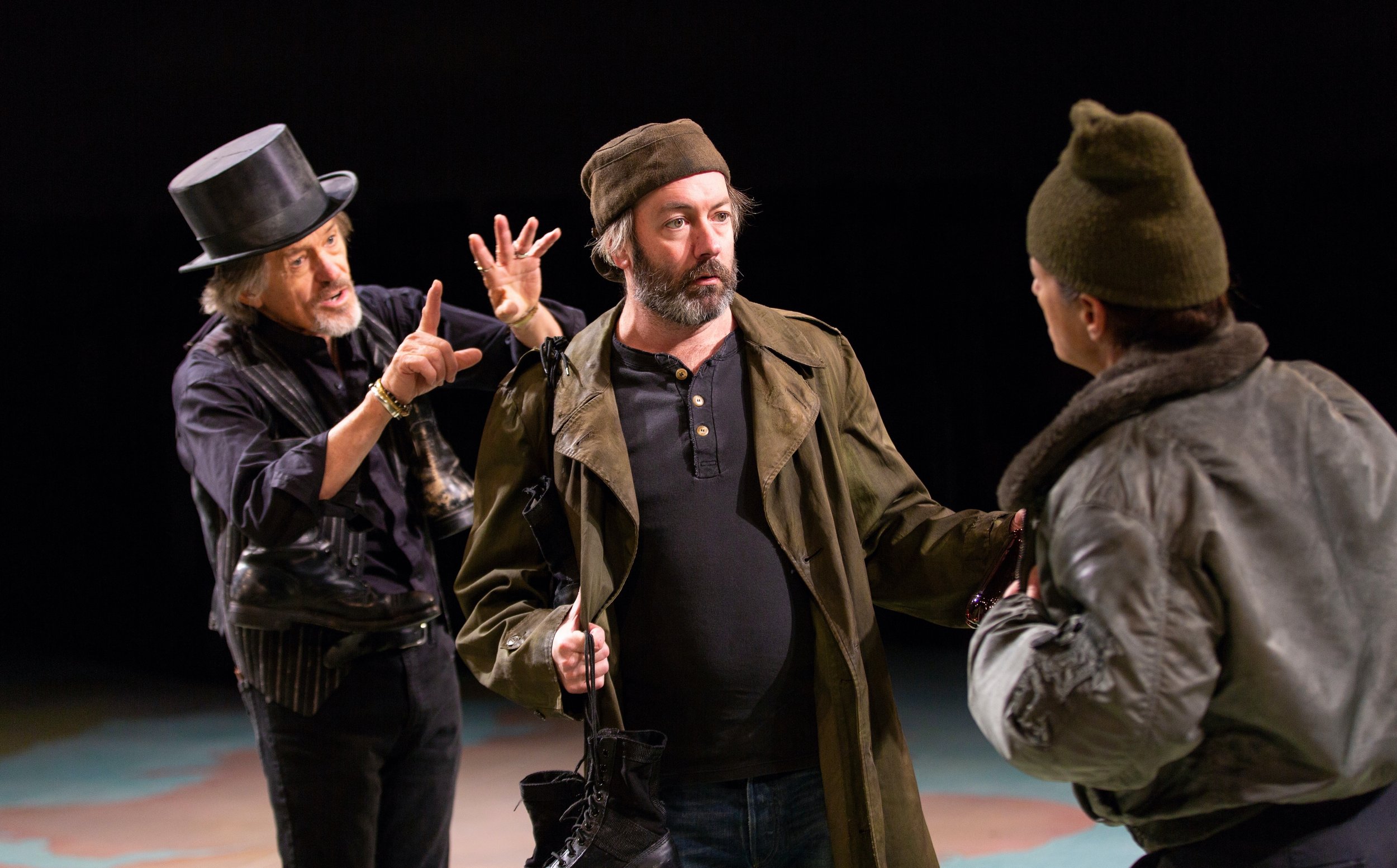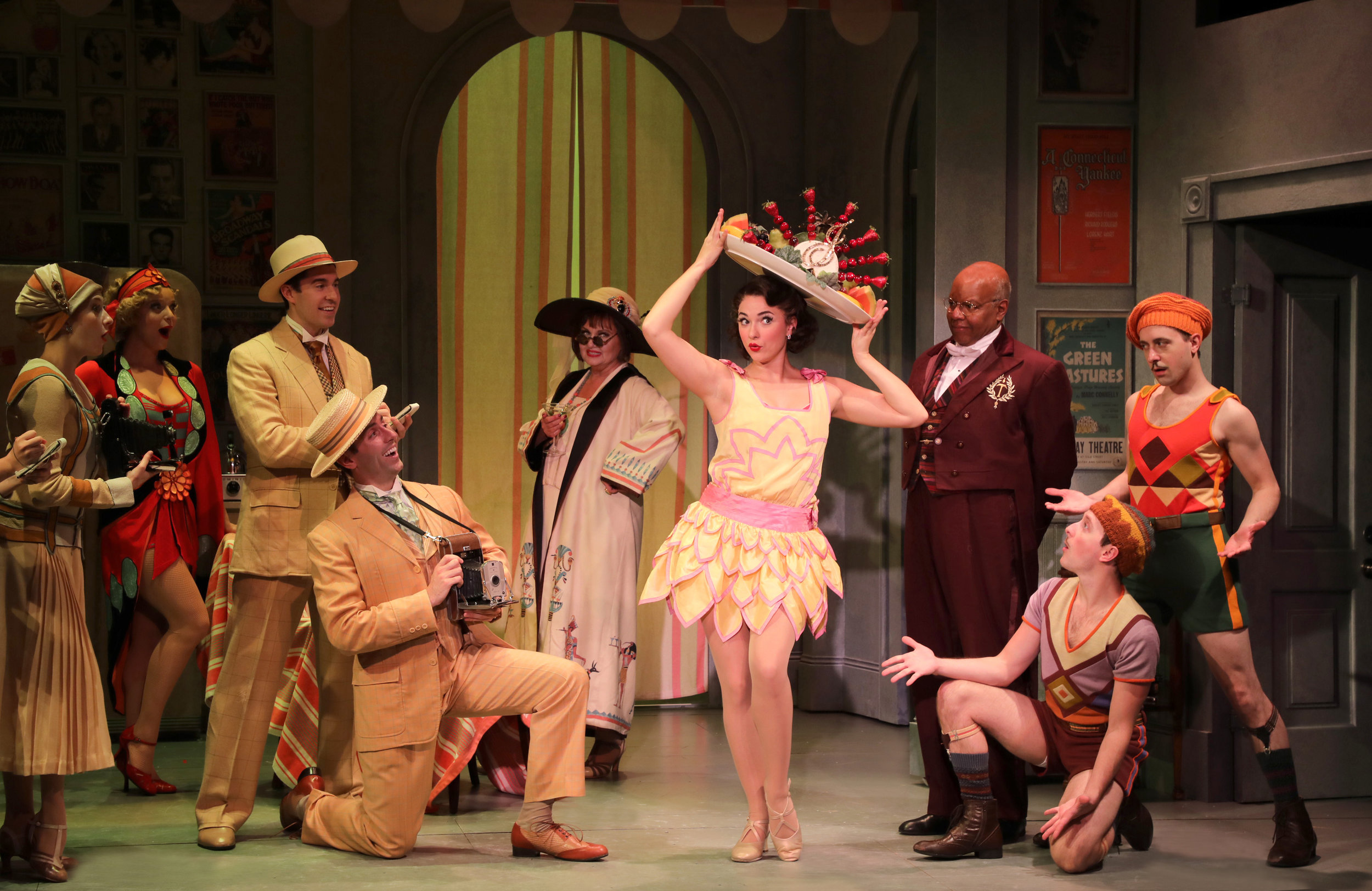Review of The Whale in the Hudson, Yale Cabaret
The Yale Cabaret ends the first half of its season with a bittersweet tale of a whale that ventured into the Hudson River, as happened for real in November, 2016, the year the play is set. The fact of the whale’s presence sets off an effort by self-styled sleuth Taylor (Laurie Ortega-Murphy)—aka, on duty, “Warren G. Smugeye”—to uncover the whale’s motives. It should be mentioned that Taylor first hears of the whale in their 4th grade class, from inspiring 4th grade teacher, Miss Melody (Evelyn Giovine). When Miss Melody tells a colleague she may quit, seeing the whale as “a sign” of things going wrong—such as the 2016 election—Taylor feels an even greater urge to risk their credibility as a detective to get to the bottom of things.
The play, which invites audience participation in performing the catchy “whale in the Hudson” jingle with voice and hand-gesture, is at times whimsical, at times absurdist, and even a bit heartbreaking. It’s a potent mix of emotions for a younger audience who will no doubt enjoy watching a play in which kids are more important than adults. Directed by Maeli Goren, The Whale in the Hudson has the feel of an episode in the continuing adventures of Warren G. Smugeye (like Encyclopedia Brown) and, as with any detective yarn, there are odd clues—such as the mysterious use of the number 52—and a series of informants and obstacles. The plot tends to meander around, saving its best bit for last: Evelyn Giovine’s affecting turn as the voice of the whale (called “52”) matched with a truly amazing whale puppet devised by costume designer David Mitsch.
Part of the fun is how Taylor’s peers are depicted. Fellow 4th graders at first seem merely clueless—which makes them try the patience of the budding P.I. Then, in need of expertise, Taylor visits a school club of brainiacs (Maeve Brady, Rob Hayer, Ipsitaa Khullar), complete with thinking caps, who like to dicker about Hume and Kant while presuming themselves to be flawless intellectuals. Again, not much help with the case, despite an amusing sequence with a juggling robotic computer (Giovine). Another lead takes Taylor to the playground madcap known as Poppy Hobnobber (Khullar) who speaks with spellbinding clarity about nonsense the way so many characters do in Alice in Wonderland. And she—eventually—sends him off in search of the notebook of an older boy—a dreaded 8th grader!—adorned with a drawing of a whale and, yes, the number 52. That pursuit brings us to a team of jocks (Brady, Giovine, Hayer) with a penchant for ritual humiliation, and from that stressful encounter Taylor manages to salvage a friend, Douglas (Brady).
With songs accompanied by Bard McKnight Wilson, the playwright, on guitar, The Whale in the Hudson delights in the kinds of weird non-sequitur that kids—who all see themselves as misfits—glory in. In the end—which borrows from the fate of a whale trapped in a bay off Long Island that same year—the kids learn the limits of their ability, but they also learn the value of each other. As Taylor, Laurie Ortega-Murphy is perfect, having a hard-boiled boyishness and a mean way with a juice-box or a lollipop. Maeve Brady’s singing voice is a great asset, as is the inspired goofiness of Rob Hayer and Ipsitaa Khullar. And Evelyn Giovine shines as a beloved teacher and a beloved whale, as well as rather salacious cake frosting.
A whale of a good time, The Whale in the Hudson ends 2018 year with a charming tale of kids learning to connect in contemporary New York.
The Whale in the Hudson
By Brad McKnight Wilson
Directed by Maeli Goren
Co-Producers: Madeline Carey & Oakton Reynolds; Dramaturg: Sunny Jisun Kim; Scenic Designer: Jimmy Stubbs; Lighting Designer: Nicole Lang; Sound Designer: Megumi Katayama; Music Director: Liam Bellman-Sharpe; Costume/Puppet Designer: David Mitsch; Stage Manager: Olivia Plath; Technical Director: William Neuman; Community Connector: Madeline Charne; Accompanist: Brad McKnight Wilson
Cast: Maeve Brady, Evelyn Giovine, Rob Hayer, Ipsitaa Khullar, Laurie Ortega-Murphy
Yale Cabaret
December 6-8, 2018
The Cabaret is dark until the second weekend in January when it returns with School Girls; Or, The African Mean Girls Play, by Jocelyn Bioh, proposed by Christopher Betts, a first-year director, about tensions in a posh school in Ghana around the school’s beauty pageant, January 10-12.

